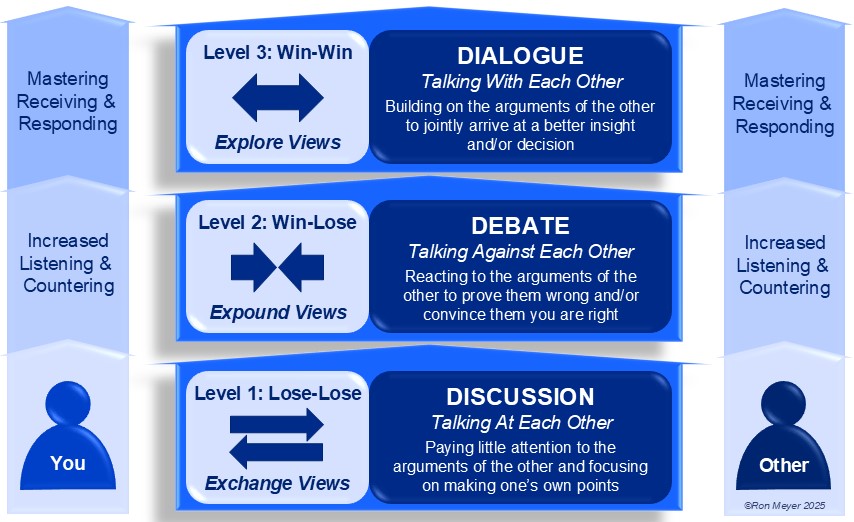While some people can work on their own, managers need to spend most of their time in conversation with others – engaging in two-way communication with the intention of achieving some result, such as gaining a better understanding, making a decision, or moving into action.
Conversations involve the simple act of verbally interacting with each other, sometimes on a one-to-one basis, while at other moments in larger group settings. But while interacting is commonplace and easy, interacting effectively is rarer and more difficult. It requires both sides to talk to each other in a particular way, in other words, to use a specific conversation type.
The Conversation Elevator model distinguishes three conversation types, that from bottom to top progressively lift the interaction to a higher level of effectiveness. The model suggests that if people are not intentional about how they engage in conversation, they will get stuck at the ground floor; in discussion, exchanging views, talking at each other, with little impact on either’s opinion. To move one level up, to a debate type conversation, they need to start listening and talking against the other, with the intention of expounding their views and convincing the other. To elevate the conversation to the level of dialogue, at which people talk with each other, exploring each other’s views, requires the mental shift of wanting to truly understand the other’s perspective, in order to build on it. This is usually the most effective conversation type.

The three types of conversations are the following: